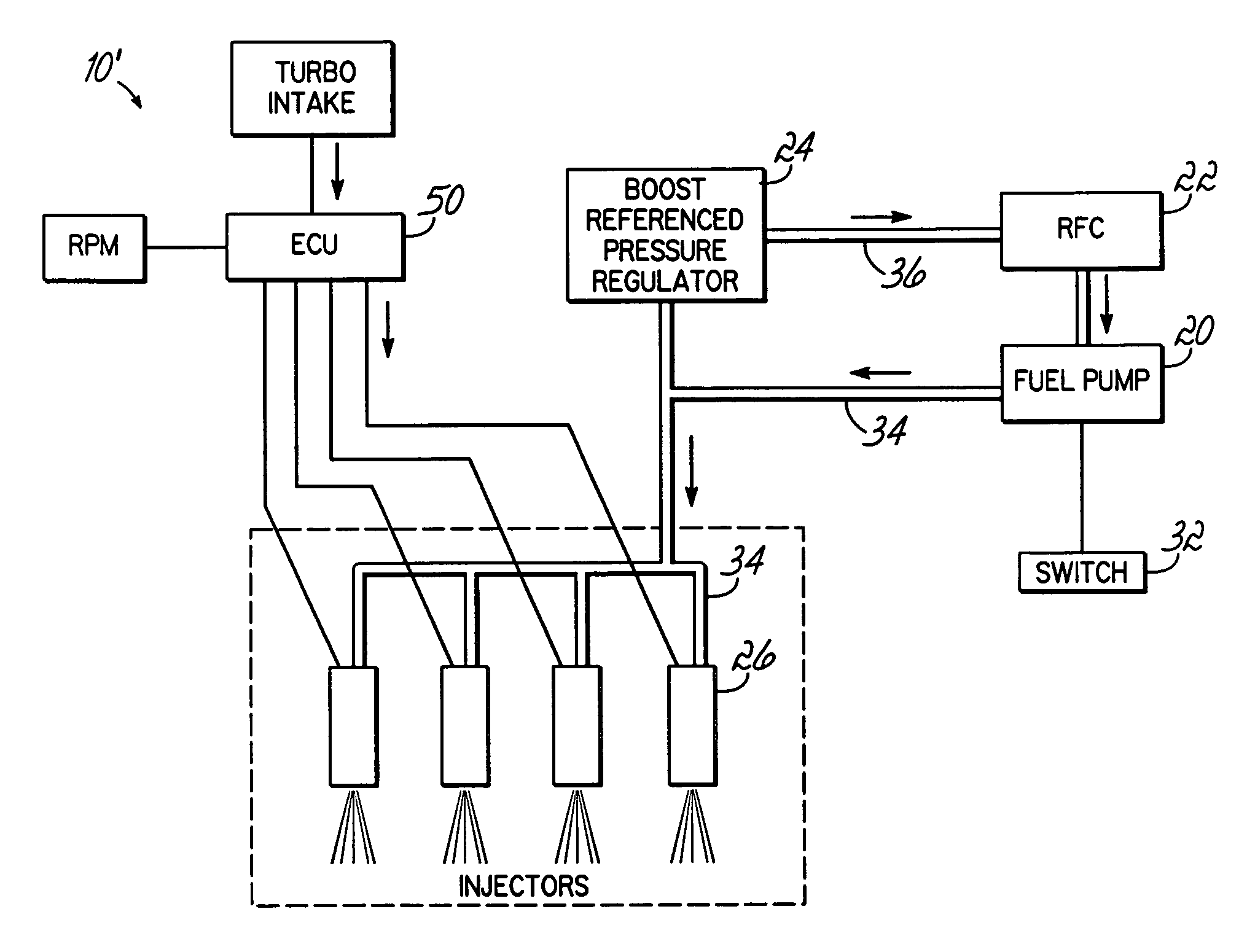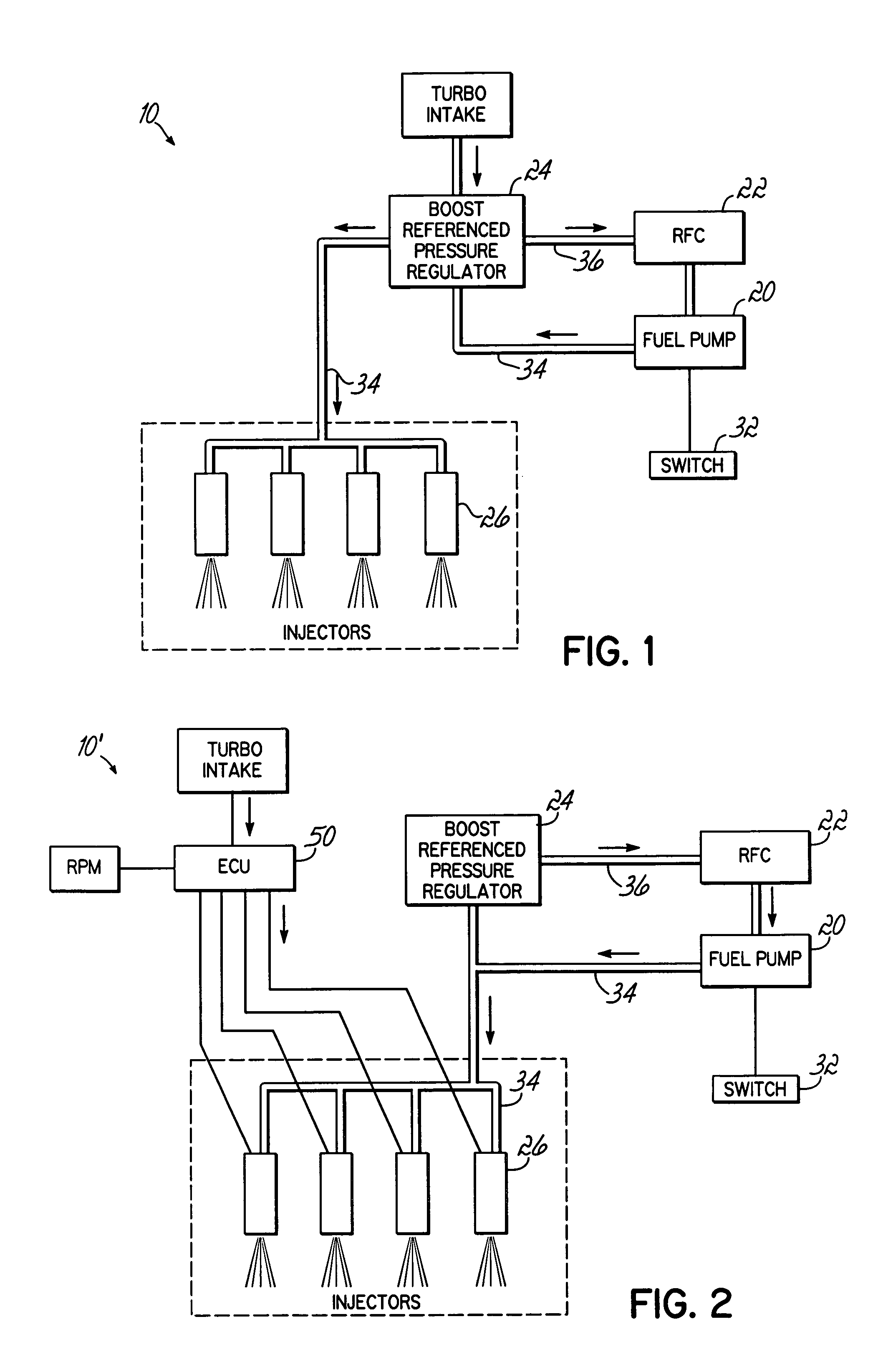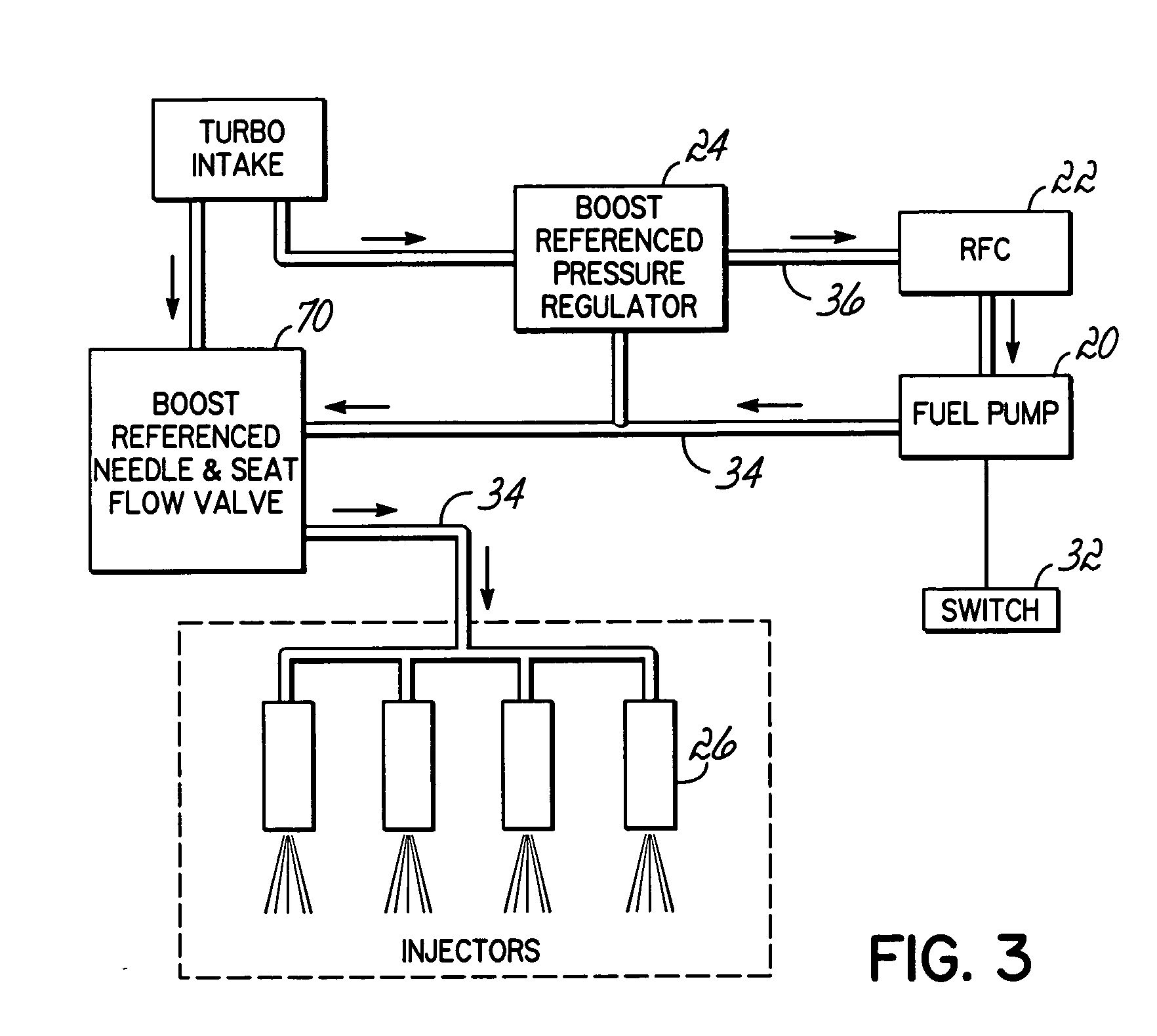System and method for operating an internal combustion engine
a technology of internal combustion engine and system, which is applied in the direction of machines/engines, liquid fuel feeders, electric control, etc., can solve the problems of uncontrollable detonation or self-ignition of mixture without the use of spark plugs, pistons cannot simply reverse their motion, and the temperature of the cylinder rises, etc., to achieve the effect of reducing waste of resources
- Summary
- Abstract
- Description
- Claims
- Application Information
AI Technical Summary
Benefits of technology
Problems solved by technology
Method used
Image
Examples
Embodiment Construction
[0023]FIGS. 1-3 illustrate various systems for operating an internal combustion engine. Each of the systems may be used to implement one or more methods according to the invention. More specifically, each of the systems enables racing fuel concentrate to be supplied to the engine on an as-needed basis. Although only three systems are shown and described herein, those skilled in the art will appreciate from the following description that other systems and arrangements may be used to implement methods according to the invention.
[0024] As a preliminary matter, the term “racing fuel concentrate” refers to a petroleum distillate (UN no. 1268) for premium racing fuels. In other words, the term refers to a product made from crude oil that has been distilled in a refinery and processed in a manner consistent with the production of racing fuels. One example of such a product is Torco® Mach Series Accelerator Race Fuel Concentrate. Racing fuel concentrates typically have a solubility in wate...
PUM
 Login to View More
Login to View More Abstract
Description
Claims
Application Information
 Login to View More
Login to View More - R&D
- Intellectual Property
- Life Sciences
- Materials
- Tech Scout
- Unparalleled Data Quality
- Higher Quality Content
- 60% Fewer Hallucinations
Browse by: Latest US Patents, China's latest patents, Technical Efficacy Thesaurus, Application Domain, Technology Topic, Popular Technical Reports.
© 2025 PatSnap. All rights reserved.Legal|Privacy policy|Modern Slavery Act Transparency Statement|Sitemap|About US| Contact US: help@patsnap.com



